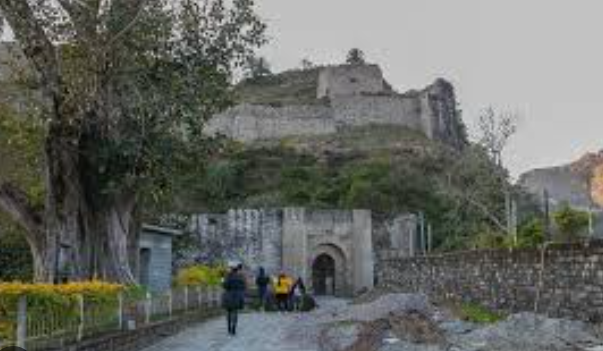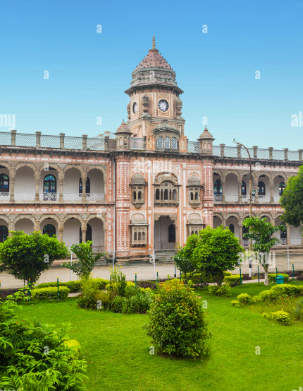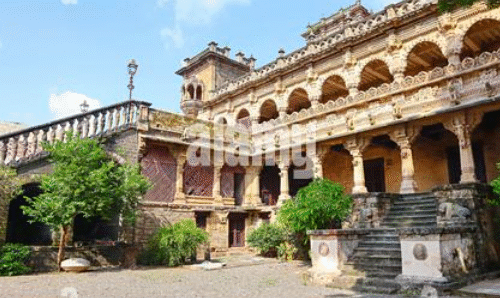Kangra Fort is one of the oldest forts in India. It is located in the beautiful state of Himachal Pradesh. This historic fort lies in the Kangra district and stands as a symbol of bravery, culture, and ancient Indian architecture.
The fort is famous for its strength, size, and location. It has seen many rulers, wars, and changes over thousands of years. Today, it is a peaceful place that attracts history lovers, nature lovers, and tourists from all over the country.
Introduction to Kangra Fort
Kangra Fort is very old. It is known for its long and rich past. This fort is believed to be over 3000 years old. It was built by the Katoch kings. They were among the oldest royal families in India. The fort is even mentioned in ancient books like the Mahabharata.
Many battles have been fought here. Many powerful rulers tried to capture it. The fort was first attacked in 1009 AD by Mahmud of Ghazni. He took away a lot of treasure. After that, other rulers like the Tughlaqs, Mughals, and Sikhs also ruled the fort.
In 1620, the Mughal king Jahangir took control of the fort. Later, Maharaja Ranjit Singh of Punjab ruled it. After him, the British took over. Today, the fort is open to all and tells the story of India’s royal past.

Location of Kangra Fort
The fort is located near Kangra town in Himachal Pradesh. It is about 20 kilometers from the popular hill station Dharamshala. It is built on top of a hill, which gives it a strong position. The fort stands at the meeting point of two rivers — Banganga and Manjhi.
The view from the fort is beautiful. You can see green forests, high mountains, and flowing rivers. The air is fresh and clean. The place is calm and full of nature. It is the perfect spot for people who love peace and natural beauty.
The hill and rivers around the fort made it very safe in old times. Enemies found it hard to attack this fort due to its location. This natural setup helped protect the people who lived inside.
How to Reach Kangra Forts
Reaching Kangra Fort is easy. You can travel by road, train, or air.
The nearest airport is Gaggal Airport, which is only 13 kilometers away. You can take a taxi or cab from the airport.
The nearest train station is Kangra Mandir Railway Station. It is just 3 kilometers from the fort. Small trains run here, and the journey is very scenic.
If you are coming by road, buses and taxis are available from Dharamshala, Palampur, and other nearby towns. The roads are good and well-connected. The drive is peaceful and filled with beautiful sights of hills and trees.
Architecture of Kangra Forts
The fort is made mostly of stone. Its walls are thick, strong, and very high. The fort is designed in such a way that it could easily defend against enemy attacks.
There are seven main gates. These gates were made to slow down the enemies. Each gate has a name. Some of the famous ones are Ranjit Singh Gate, Jahangiri Gate, and Andheri Gate. These gates are still standing and show the power of ancient Indian builders.
Inside the fort, there are many steps and narrow paths. These paths lead to different parts of the fort. There are also old rooms and halls. Some are broken, but you can still feel the royal touch.
There are several temples inside the fort. The most famous one is the Ambika Devi Temple. There are also small temples of Lord Shiva and Lakshmi Narayan. These temples show that people inside the fort had deep faith.
You can also see tall watchtowers. In old times, soldiers used these towers to watch the valley and guard the fort. The towers gave them a clear view of anyone coming from far away.
Design of Kangra Forts
The design of Kangra Fort is very smart and well planned. The builders used the natural hill to make the fort stronger. The steep hill made it hard for enemies to climb and attack.
The seven gates were not placed in a straight line. They were built one after the other, with turns in between. This slowed down the attackers and gave time to the defenders.
The inside of the fort had everything needed to survive. There were water tanks, storage rooms, and secret paths. During war or siege, people could stay inside for many days. They had food, water, and shelter.

The fort also has open areas where people used to gather. These spaces were used for meetings and ceremonies. Even today, you can stand there and feel the strong wind and silence of the past.
From the top of the fort, you can see the full Kangra Valley. The view is wide and beautiful. It gives a picture of the natural beauty of Himachal Pradesh. The design of the fort shows the intelligence of ancient Indian builders.
Why You Should Visit Kangra Forts
Kangra Fort is not just an old building. It is a living story. It tells us about the past, about the kings, the people, and their lives. If you love history, you will enjoy every part of the fort.
The mix of history, nature, and faith makes this place special. It is perfect for school trips, family visits, or solo travel. You can learn many things by just walking through the old paths and walls.
The best time to visit is from October to March. The weather is cool and pleasant. You can explore the fort without heat or rain. Carry water, wear comfortable shoes, and take your time to enjoy the place.
Conclusion
Kangra Fort is a treasure of Indian history. It is a place where you can feel the past. The fort stands strong even after so many years. It shows the art, skill, and power of our ancestors.
If you ever go to Himachal Pradesh, do not miss this fort. It is more than a tourist spot. It is a memory of India’s pride and glory. Read More





One comment on “Kangra Fort: The Pride of Himachal’s Past”